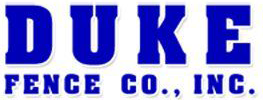5 Tips for Designing the Perfect Front Yard Fence
A front yard fence requires a careful balance of form and function, especially since a fence can have a major impact on the curb appeal of your home. Careful consideration of your fencing needs in conjunction with choosing an attractive design helps to ensure your new fence will add to, rather than detract from, your home.
1. Define Your Why
Start by deciding why you want to fence in your front yard. Is the fence for security, to protect your lawn, or to keep children and pets on your property? Perhaps you need a fence for more than one reason. If you know your why before you start looking at fencing options, you can easily weed out designs that won't work and hone in on those that serve your needs best.
Pro Tip:
Divide a piece of paper in half. On the first half, write down all the reasons why you need a fence. On the second half, detail the types of fences that can fulfill the need. For example, if your only goal is to keep neighborhood dogs off your lawn, then a low barrier may be all that's necessary for dog walkers to pass by your property.
2. Know the Local Rules
Not all localities allow front yard fences, and of those that do, restrictions may be in place. Fence restrictions are often put in place by city or county code ordinances, so find your local rules by contacting your city planning office. As a general rule, front yard fences can't exceed four feet tall , but always verify this with your local planning or zoning office.
Pro Tip:
City and county rules may not be the only fence regulations you need to abide by. Many homeowners associations also have strict rules governing the placement, materials, and colors of a fence, particularly in the front yard.
3. Decide Upon a Material
Wood, vinyl, chain link, iron - you have many options in fencing to choose from. With the front yard, appearance must play a major role in your decision. Vinyl, wood, aluminum, and iron fencing provide some of the most attractive materials to choose from. Chain link is durable, but it doesn't always fit in well with the aesthetics of a neighborhood, so it is often reserved for backyard use.
Pro Tip:
Don't forget maintenance needs when choosing a fence, especially in the front yard where higher public traffic is present with exposure to things like snow removal equipment. Materials like vinyl and aluminum can be a better option simply because they are less prone to damage.
4. Choose a Design
Fence design is a balance of function and aesthetics. Open pickets keep the open view one often desired in front of the house, while still providing a barrier. For a more decorative fence, opt for additional design elements like post finials. For any design, look at your home first. For example, if you have iron railings on your porch, you may want to mimic the design on the fence to provide cohesion.
Pro Tip:
If you have young children, space pickets no further apart than
four inches so that the child can't get their head stuck between the pickets.
5. Pick Out the Perfect Gate
A fence is only as strong as its entrance points, so a locking gate may be necessary if you need to keep children in or intruders out. The gap under a gate is also a concern. Choose a gate with an included rubber sweep that closes the gap. Alternatively, install a raised concrete curb beneath the gate so the gap is diminished.
Pro Tip:
Remember that others must sometimes access your property. A locking gate can be great for security, but a work-around is necessary if it interferes with access for utility workers, mail delivery, or other visitors. A doorbell or intercom system wired to the gate can allow visitors to alert you even if they can't open the gate to walk up to the door.
Contact Duke Fence Co., Inc.,
for more fence design assistance.
